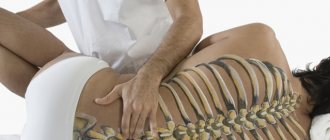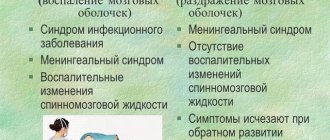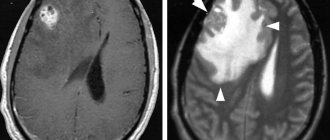Tourette's syndrome (Tourette's disease, Gilles de la Tourette's syndrome, or simply TS or Tourette) is a hereditary neuropsychiatric disease that begins in childhood. It is characterized by multiple physical (motor) tics as well as at least one auditory tic. These tics usually wax and wane, are preceded by some impulses, and it is also possible to temporarily suppress them. Tourette's is considered a type of tic disorder and is characterized by the presence of temporary, intermittent, or persistent (chronic) tics.
The main cause of Tourette's syndrome is genetics. Among the main signs of the disease: obsessive repetitions of the same movements, tics and other behavioral disorders. The strength of these symptoms may vary. The mild course of the syndrome is almost imperceptible, but there are also much more complex cases.
The first signs of the disease appear in children at an early age: from 2 to 5 years. Sometimes the disease manifests itself in adolescents aged 11-18 years.
The first mentions of similar symptoms can be found in the works of medieval doctors, but the syndrome was classified as a separate disease by Georges Gilles de la Tourette.
Stages of Tourette's syndrome
Patients are diagnosed in 4 stages:
- Light. In this case, the syndrome may be invisible even to loved ones. A person is in complete control of his behavior. Tics may not be observed for a long time.
- Moderate. Sometimes emotional stress increases so much that the patient cannot control the attack.
- Expressed. During attacks, a person with this stage almost completely loses control. It is difficult for him to live in society. It becomes almost impossible to work and solve everyday problems.
- Heavy. The attacks are uncontrollable. Such patients are often diagnosed with incapacity.
Modern diagnostic methods do not guarantee 100% detection of the disease. Doctors often make this diagnosis if, in addition to external manifestations, the patient had family members with similar problems.
Symptoms
The first signs of the disease appear in preschool age. The child makes repeated sudden movements. He grimaces, twitches, and makes sudden screams. He develops tics, which are rapid, sudden, irregular muscle contractions. They are accompanied by sounds. Tics are considered involuntary movements. Despite the fact that some patients are able to suppress them.
Over time the situation is getting worse. The baby involuntarily repeats the words and movements of the people around him. It's like imitating. The child shouts offensive, rude words. The patient may develop complex tics. They last longer. They include a combination of a series of simple tics - these are various words and gestures.
Vocal tics are classified as follows:
- echolalia – repetition of phrases spoken by others;
- coprolalia - shouting words belonging to profanity;
- palilalia – constant repetition of one sentence or word.
Immediately before the attack, the child feels emotional excitement, a feeling of internal tension. The feeling grows so intensely that the patient can no longer cope with his body. He twitches and makes strange sounds. After the attack, the child feels relief. He comes to his senses and then calms down.
Similar symptoms are accompanied by other mental or neurological disorders.
These may be the following manifestations:
- involuntary movement disorders (dystonia);
- mental disorders;
- repetitive obsessive movements.
Symptoms of the disease most clearly manifest themselves in adolescence, increasing social maladjustment. As they get older they weaken.
Sign up for a consultation
Have you noticed one or more symptoms?
Classification of Tourette's syndrome
Tics are sudden, repetitive, irregular movements (motor tics) caused by the contraction of individual muscle groups. Motor tics are based on movement, while speech tics involve the involuntary production of sounds through the nose, mouth or throat.
The DSM-IV-TR classified Tourette Syndrome as one of several tic disorders that "often manifest in infancy, childhood, or adolescence" and are categorized by type (motor or vocal tics) and duration (temporary or chronic). Temporary tics manifest as multiple motor or vocal tics (sometimes both) over a period of four weeks to twelve months. Chronic tics can be single or multiple, motor or auditory (but never both), which appear for more than a year.
Tourette syndrome can be diagnosed if there are constant motor tics and at least one vocal tic for a year. The DSM-5, published in May 2013, reclassified Tourette syndrome and tic disorders as movement disorders classified as neurodevelopmental disorders, and replaced transient tics with temporary tics. In addition, several other significant changes have been made.
Tourette syndrome is classified in almost the same way in ICD-10, which was compiled by the World Health Organization. In this classification, multiple auditory and motor tics (Tourette's syndrome) were coded F95.2. Although Tourette's is the most severe of all tic disorders, most cases of the disease are fairly mild. Symptoms of patients vary greatly and a moderate form of the disease may not be noticed at all.
Manifestations of Tourette's syndrome
The main manifestation of Tourette's syndrome is motor and vocal tics, which first appear in children between 2 and 5 years of age. In turn, tics can be simple or complex.
Motor tics
Simple motor tics do not last long and are performed by one muscle group. This may be involuntary frequent blinking, sniffing, pulling out lips, grimacing, shrugging, twitching of hands, scratching, frowning, twitching of the head, clanking of teeth, etc.
Complex motor tics include: jumping, touching an object or person or parts of one's body, hitting one's head against a wall, pressing on the eyeballs, sharply throwing one's legs forward, clapping one's hands, biting one's lips until they bleed, making obscene gestures, and the like.
Vocal tics
Vocal tics in Tourette syndrome are as diverse as motor ones. Simple vocal tics can be manifested by repetition of meaningless sounds and syllables, whistling, puffing, screaming, mooing, hissing. When intertwined with the flow of speech, vocal tics can create the false impression of hesitation, stuttering, and other speech impediments. An obsessive cough and sniffling are often mistakenly perceived as manifestations of allergic rhinitis, sinusitis, or tracheitis. Sound phenomena that accompany the course of Tourette's syndrome also include echolalia (repetition of heard words), palilalia (multiple repetition of the same own word), coprolalia (shouting obscene, swear words). Vocal tics are also manifested by changes in rhythm, tone, accent, volume, and speed of speech.
Diagnostics
To make a diagnosis and subsequent treatment, you should contact a pediatric neurologist. Tourette syndrome is diagnosed to a patient if he has had tics (motor and vocal) for more than one year.
The following clinical manifestations must be present:
- onset before age 20;
- wave-like current;
- the presence of stereotypical movements.
To exclude psychiatric pathology, the patient should be sent for consultation to a psychiatrist.
Additional research methods include:
- CT, MRI of the brain;
- EEG;
- analysis of catecholamine levels;
- determination of metabolites in urine (norepinephrine, dopamine, homovanillic acid);
- electromyography;
- electroneurography.
Dynamic monitoring of the patient’s condition plays an important role in establishing a diagnosis.
How do you get Tourette's syndrome?
No clear reasons have been identified. In addition to the genetic component, doctors also talk about additional factors.
An autoimmune cause is often cited: many patients have previously suffered from streptococcal diseases. Brain dysfunction is another reason. The syndrome is associated with dysfunction of the thalamus, basal ganglia and pathologies of the frontal lobes. Many adults and children diagnosed with the disorder have elevated dopamine levels. Metabolic disorders can also trigger the onset of the disease.
Causes
The exact cause of the development of Tourette's syndrome has not yet been identified. The leading place in its development is given to genetic factors. This is confirmed by the forms of family diseases described in the literature. The predominant type of inheritance is considered autosomal dominant with incomplete penetrance. Less commonly, the disease is transmitted in an autosomal recessive manner.
There are factors that increase the likelihood of developing the disease:
- toxicosis and stress in pregnant women;
- intrauterine hypoxia;
- taking certain medications, alcohol, drugs during pregnancy;
- birth injuries;
- prematurity;
- past streptococcal infection;
- intoxication;
- hyperthermia;
- prescribing psychostimulants to children;
- emotional overload.
The development of the pathological process is based on a violation of the structure and function of the subcortical ganglia. The functioning of neurotransmitter and neurotransmitter systems changes. Another common hypothesis is that the disease is caused by an increase in the production of dopamine or an increase in the sensitivity of the cell receptor apparatus to it.
Diagnosis of Tourette's disease
Diagnosis of Tourette's disease is based on collecting anamnesis (presence of relatives with this disease), characteristic symptoms that have been present for a year or more.
At the first visit of a patient with Tourette's syndrome, a neurological examination is performed, the purpose of which is to exclude organic brain damage (tumor). To do this, the patient undergoes computed tomography, nuclear magnetic resonance and electroencephalography. A biochemical blood test is also examined to exclude metabolic disorders.
Differential diagnosis is carried out with many diseases (Wilson-Konovalov disease, Huntington's chorea, juvenile form of Parkinson's disease, rheumatic chorea and others).
Gilles De La Tourette syndrome - paroxysms, tics, ticoid movements - onset of the disease
De la Tourette's disease is characterized by the presence of motor paroxysms, which occur at the onset of the disease and initially occur when walking. In most cases, they are in the nature of short-term rapid general or local myoclonus: general shuddering, tilting the head and torso in different directions, bending the legs at the knees, jumping, squatting, stomping in place, shaking the head, throwing arms to the sides, striking the body with hands. Sometimes paroxysms are of a complex, fanciful nature: moving the legs to the side, imitating the flight of a bird (flapping the arms), rocking, tucking the leg, short-term freezing. They remain stereotypical for a long time and can be imitated by a child. Such paroxysms in 37.5% of cases are the first clinical manifestation of Tourette's disease or, more often, occur against the background of thyroid hyperkinesis. Subsequently, after a certain period of time (from several months to several years), sound phenomena (screams, shouting, vocalisms) also appear, which indicates Tourette's syndrome.
With the progression of Gilles de La Tourette syndrome, motor paroxysms during walking may regress or remain the same, and occur at rest. At this time, patients shout out words or sounds. According to Sarklinik, in 8.33% of cases, motor paroxysms occur with sound phenomena or shortly after their occurrence.
In Gilles de La Tourette syndrome, in most cases, emotional or behavioral disturbances of varying severity are observed. Experiences of contrasting content and antisocial behavior are often characteristic. This can manifest itself in the form of bad thoughts, contrasting ideas, impulsive drives aimed at damaging valuable objects, disruption of order in school and public places, aggression towards relatives and friends, sadistic and exhibitionistic acts. Such contrasting impulses are sudden and irresistible. Characteristic is the desire for their immediate implementation, which sometimes leads to antisocial acts and aggressive behavior. The basic affective background is in most cases increased, less often decreased. Self-harm phenomena are sometimes observed: patients beat themselves in the chest, knock their knees against their knees, bite their lips, which, however, rarely leads to visible changes in the skin and mucous membranes. Some patients experience an irresistible desire to swallow objects brought to the mouth (spoon, fork, knife, etc.).
With de la Tourette's disease, mental retardation is rarely observed. The majority of patients have average mental abilities; they study at school with grades of four, three, and two. Sometimes, during an external examination, anomalies of varying severity are observed (video, forum, film).
How are they treated?
Cognitive behavioral therapy and psychological and pedagogical consultation are widely used. Only if there is no effect, the doctor can prescribe the use of medications.
In all cases, preference is given to non-drug methods: acupuncture, segmental reflex massage, laser reflexotherapy, exercise therapy, etc. The main method of treating Tourette syndrome is psychotherapy, which allows one to cope with emerging emotional and social problems. Promising methods for treating Tourette's syndrome are biofeedback therapy, injections of botulinum toxin to prevent vocal tics, etc.
Psychotherapy plays the main role in the treatment of Tourette syndrome, both with the child and his parents. The patient must be instilled with an adequate attitude towards his condition and the absence of inferiority. Special games, therapeutic communication with animals, and active physical rest are used.
Course and prognosis of Tourette's syndrome
When treated for Tourette's syndrome, half of patients experience improvement or stabilization in late adolescence or adulthood. If persistent generalized tics persist and cannot be controlled, lifelong drug therapy is required.
Despite its chronic course, Tourette syndrome does not affect life expectancy, but can significantly worsen its quality. Patients with Tourette syndrome are prone to depression, panic attacks, and antisocial behavior, and therefore need understanding and psychological support from others.
This syndrome should not negatively affect your life. There are many people known to suppress its symptoms. For example, the now mega-popular singer Billie Eilish, who has been diagnosed with Tourette syndrome, shows that it is quite possible to live with this.
Tim Howard also serves as an excellent example that this disorder is not a death sentence. For those who don't know, this is an American goalkeeper. Moreover, the goalkeeper is not bad. He played for Manchester United and Everton, and was also a goalkeeper for the US national football team. And everywhere he acted as the main goalkeeper.
Manifestation of tics
Tics usually appear between 5 and 7 years of age. The most common are motor tics of the head and neck. They usually increase in frequency and severity before puberty (8-12 years). Most people with the disease notice improvement in their late teens, and sometimes the tics go away completely.
However, in a small proportion of people, symptoms worsen in adulthood, especially if it coexists with other mental disorders, chronic physical illness, drug use, and a hostile family environment.
Child abuse
Tics can range from mild to severe, and in some cases can be debilitating and harmful to the person. They change regularly in type, frequency and severity. Sometimes the causes are unknown, but it is often a reaction to factors such as stress, anxiety, fatigue, illness or overexcitement.
It is estimated that about 1% of children aged 5 to 17 years suffer from some form of tic. Although it occurs in all cultures and ethnic groups, the disease is more common in men than women.









